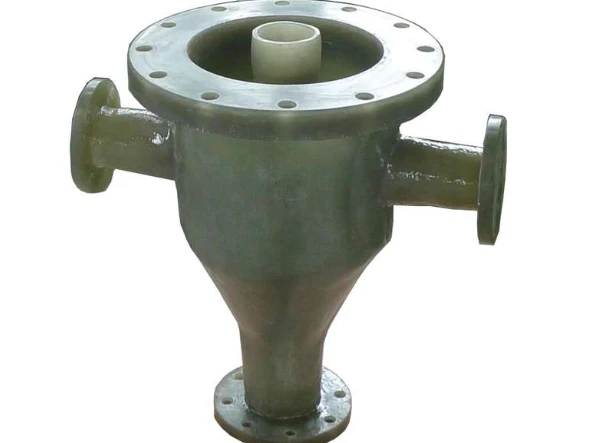
-
 Afrikaans
Afrikaans -
 Albanian
Albanian -
 Amharic
Amharic -
 Arabic
Arabic -
 Armenian
Armenian -
 Azerbaijani
Azerbaijani -
 Basque
Basque -
 Belarusian
Belarusian -
 Bengali
Bengali -
 Bosnian
Bosnian -
 Bulgarian
Bulgarian -
 Catalan
Catalan -
 Cebuano
Cebuano -
 China
China -
 China (Taiwan)
China (Taiwan) -
 Corsican
Corsican -
 Croatian
Croatian -
 Czech
Czech -
 Danish
Danish -
 Dutch
Dutch -
 English
English -
 Esperanto
Esperanto -
 Estonian
Estonian -
 Finnish
Finnish -
 French
French -
 Frisian
Frisian -
 Galician
Galician -
 Georgian
Georgian -
 German
German -
 Greek
Greek -
 Gujarati
Gujarati -
 Haitian Creole
Haitian Creole -
 hausa
hausa -
 hawaiian
hawaiian -
 Hebrew
Hebrew -
 Hindi
Hindi -
 Miao
Miao -
 Hungarian
Hungarian -
 Icelandic
Icelandic -
 igbo
igbo -
 Indonesian
Indonesian -
 irish
irish -
 Italian
Italian -
 Japanese
Japanese -
 Javanese
Javanese -
 Kannada
Kannada -
 kazakh
kazakh -
 Khmer
Khmer -
 Rwandese
Rwandese -
 Korean
Korean -
 Kurdish
Kurdish -
 Kyrgyz
Kyrgyz -
 Lao
Lao -
 Latin
Latin -
 Latvian
Latvian -
 Lithuanian
Lithuanian -
 Luxembourgish
Luxembourgish -
 Macedonian
Macedonian -
 Malgashi
Malgashi -
 Malay
Malay -
 Malayalam
Malayalam -
 Maltese
Maltese -
 Maori
Maori -
 Marathi
Marathi -
 Mongolian
Mongolian -
 Myanmar
Myanmar -
 Nepali
Nepali -
 Norwegian
Norwegian -
 Norwegian
Norwegian -
 Occitan
Occitan -
 Pashto
Pashto -
 Persian
Persian -
 Polish
Polish -
 Portuguese
Portuguese -
 Punjabi
Punjabi -
 Romanian
Romanian -
 Russian
Russian -
 Samoan
Samoan -
 Scottish Gaelic
Scottish Gaelic -
 Serbian
Serbian -
 Sesotho
Sesotho -
 Shona
Shona -
 Sindhi
Sindhi -
 Sinhala
Sinhala -
 Slovak
Slovak -
 Slovenian
Slovenian -
 Somali
Somali -
 Spanish
Spanish -
 Sundanese
Sundanese -
 Swahili
Swahili -
 Swedish
Swedish -
 Tagalog
Tagalog -
 Tajik
Tajik -
 Tamil
Tamil -
 Tatar
Tatar -
 Telugu
Telugu -
 Thai
Thai -
 Turkish
Turkish -
 Turkmen
Turkmen -
 Ukrainian
Ukrainian -
 Urdu
Urdu -
 Uighur
Uighur -
 Uzbek
Uzbek -
 Vietnamese
Vietnamese -
 Welsh
Welsh -
 Bantu
Bantu -
 Yiddish
Yiddish -
 Yoruba
Yoruba -
 Zulu
Zulu
fiberglass damper
The Role of Fiberglass Dampers in Modern Engineering
In the realm of modern engineering, especially in the fields of construction and structural design, the need for effective control of vibrations and oscillations has never been greater. Enter the fiberglass damper — a sophisticated, versatile solution that serves as a critical component in enhancing the stability and longevity of structures.
Understanding Fiberglass Dampers
Fiberglass dampers are devices designed to absorb and dissipate energy from vibrations, primarily to mitigate the effects of dynamic loads on structures such as bridges, buildings, and industrial facilities. Made from a composite material that combines glass fibers and resin, these dampers possess a unique combination of mechanical properties including high tensile strength, flexibility, and lightweight characteristics. This makes them particularly advantageous over traditional damping materials and systems.
Applications in Construction
Fiberglass dampers find extensive use in civil engineering projects. For instance, they play a crucial role in maintaining the integrity of high-rise buildings subjected to wind loads or seismic activities. By integrating these dampers into the design of structures, engineers can significantly reduce the sway that tall buildings experience during strong winds or earthquakes, thereby enhancing occupant safety and comfort.
Bridges are another application where fiberglass dampers are invaluable. They help to diminish oscillation and amplitude of vibrations caused by traffic or environmental factors. This not only prolongs the lifespan of bridges by reducing wear and tear but also ensures safer passage for vehicles and pedestrians.
Advantages Over Traditional Materials
fiberglass damper

One of the standout features of fiberglass dampers is their excellent corrosion resistance. Unlike steel or other metallic dampers, fiberglass does not succumb to rust or degradation when exposed to moisture or harsh environmental conditions. This trait is particularly beneficial in coastal areas or regions with high humidity, where traditional damping systems may fail or require frequent maintenance.
Additionally, fiberglass dampers are lightweight, making them easier and cheaper to transport and install. Their ease of integration into existing structures also reduces the overall project timeline and labor costs. Furthermore, the flexibility of the fiberglass material allows for tailored designs that can be customized to meet specific project requirements, making them suitable for a wide variety of engineering applications.
Performance and Reliability
The performance of fiberglass dampers in real-world conditions is backed by rigorous testing and simulations. Engineers have found that these dampers can effectively lower peak accelerations and displacements in structures, leading to the minimization of stress on critical components. Studies reveal that structures equipped with fiberglass dampers experience significantly less motion during seismic events, contributing to overall resilience.
Moreover, the reliability of fiberglass dampers is enhanced by their ability to maintain mechanical properties over a range of temperatures and environmental conditions. Their structural integrity remains intact, ensuring that they function effectively for many years while requiring minimal upkeep.
Future Trends and Innovations
As technology progresses, the development of advanced fiberglass composites and smart damping solutions is on the rise. Researchers are exploring ways to incorporate sensors and smart materials that can adapt to changing conditions in real-time, making fiberglass dampers even more effective at controlling vibrations. This innovation is paving the way for more intelligent and responsive engineering systems designed to protect modern infrastructures.
In conclusion, fiberglass dampers represent a significant advancement in the field of structural engineering. They offer a reliable, efficient, and versatile solution for managing vibrations and enhancing the resilience of structures. With ongoing research and development, the potential for fiberglass dampers to revolutionize construction practices remains high, promising safer and more durable infrastructure for future generations. As urbanization and construction continue to expand globally, the role of such innovative technologies is poised to become even more critical.









